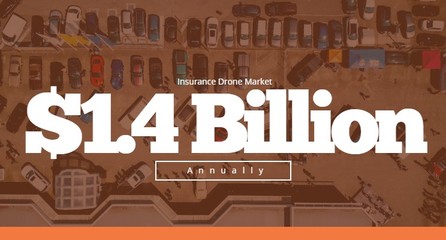Drones were once considered out of reach to the common person, being only used by governments and research facilities, but in recent years, due to cheapening materials and excessive demand, drone technology has become widely accessible. This accessibility has been leveraged by insurance firms to close claims faster and more accurately.
In the aftermath of Hurricane Irma, drones were deployed to map 300 high rise buildings on the island of St. Martin. The task was accomplished in only 10 days, a task that would easily have taken months without the usage of drones.
While drone technology available to the public is fairly new, the rapid implementation of drone technology by insurance firms is due to the obvious advantages offered by having an unmanned aerial vehicle able to take photos, video, along with other sensory technology. Indeed, insurance firms were among the first to apply for FAA drone licenses in the USA. In many ways, insurance firms are on the cutting edge of drone deployment due to the difficulty of insurance claims stemming from major disasters.
Usefulness of Drones
According to David Pitman, CEO at Converge (a drone company), the first drone used for an insurance claim (flown by David Pitman himself in New Zealand) occurred in 2014. In less than 4 years from this first drone flight for an insurance claim, according to a report by Goldman Sachs, it is estimated that the insurance drone market alone is worth approximately $1.4 billion annually.
claim (flown by David Pitman himself in New Zealand) occurred in 2014. In less than 4 years from this first drone flight for an insurance claim, according to a report by Goldman Sachs, it is estimated that the insurance drone market alone is worth approximately $1.4 billion annually.
While these numbers are impressive, drone technology used in insurance is still in its infancy. Currently, the majority of insurance drones are used for property claims that cover vast regions that are usually the result of a major calamity such as hurricanes, tornadoes, and wildfires. However, it is expected that drones will begin to show up more often in small home property claims.
The usefulness of an insurance adjuster being able to skip climbing onto a dangerous roof and instead to have the option to fly a camera around the building is obvious to both the adjuster and to the insurance firm. The insurance companies and adjusting firms both see advantages using drones as a method to close more claims faster while keeping adjusters safe from dangerous situations.
While many major insurance companies have already hopped on board with drone technology, there are many other players that are looking to expand into the booming drone industry. Researchers are working around the clock to implement artificial intelligence and machine learning techniques to drone technology.
Artificial intelligence research will certainly impact drone technology in a variety of ways, ranging from the actual flying of the drones to the assessment of the data obtained from the drones. As the future unfolds, drones will likely be used for more than just property claims. Self-deploying drones will be able to locate the claim in question, take photos and video of the claim, and finally assess and calculate the damage.
While it will still be many years before drone technology is perfected, drones simply offer far too much value to be overlooked.